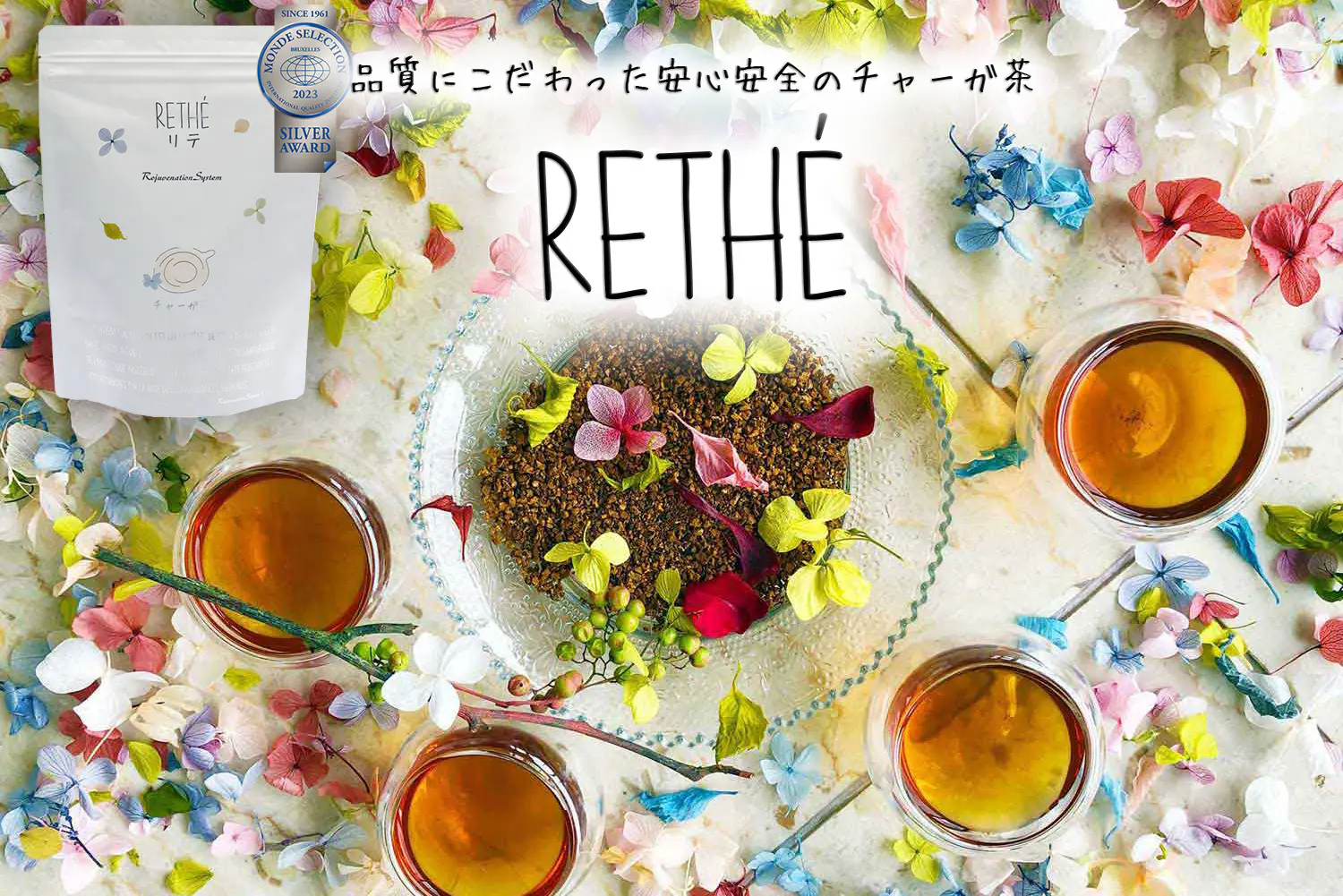
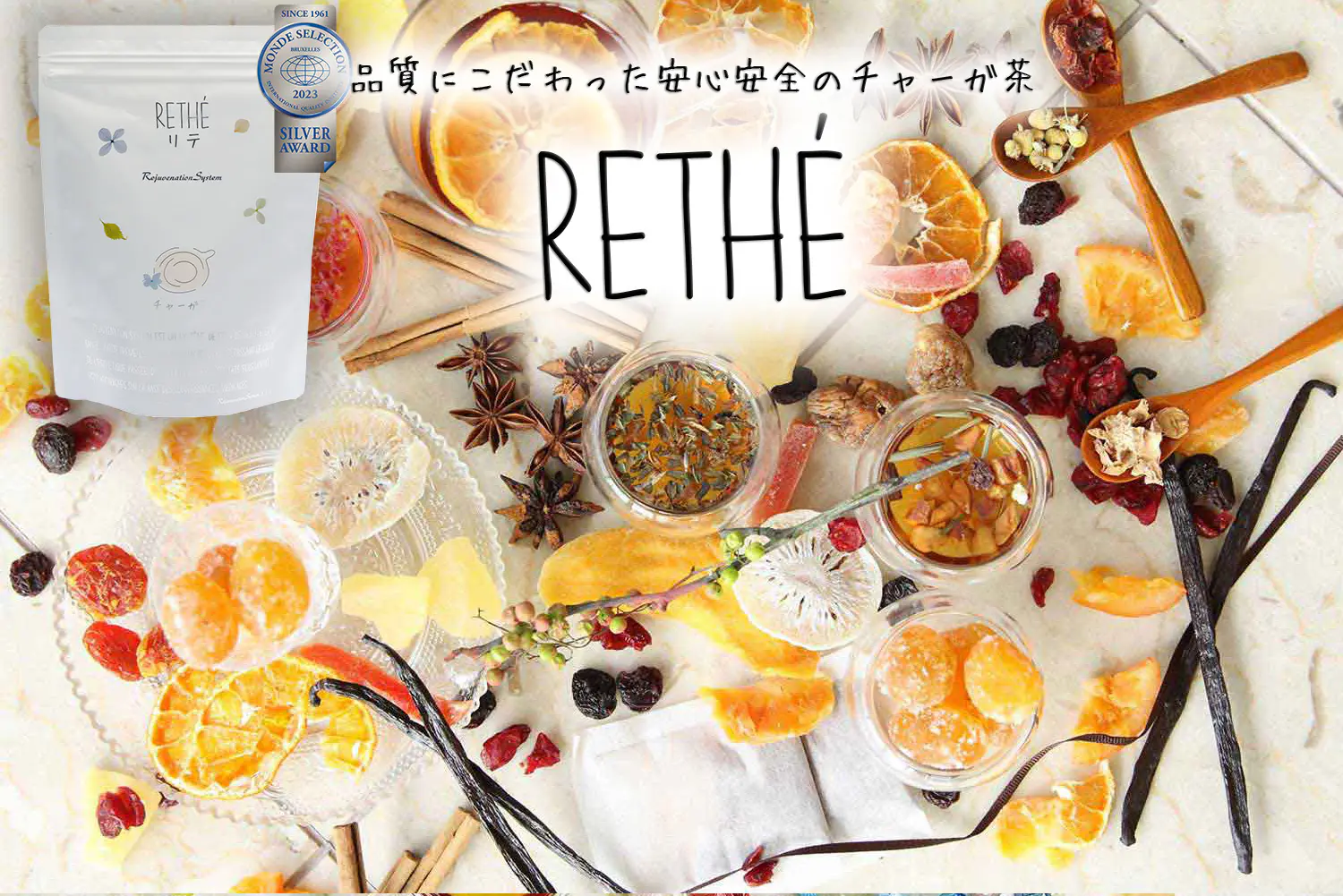
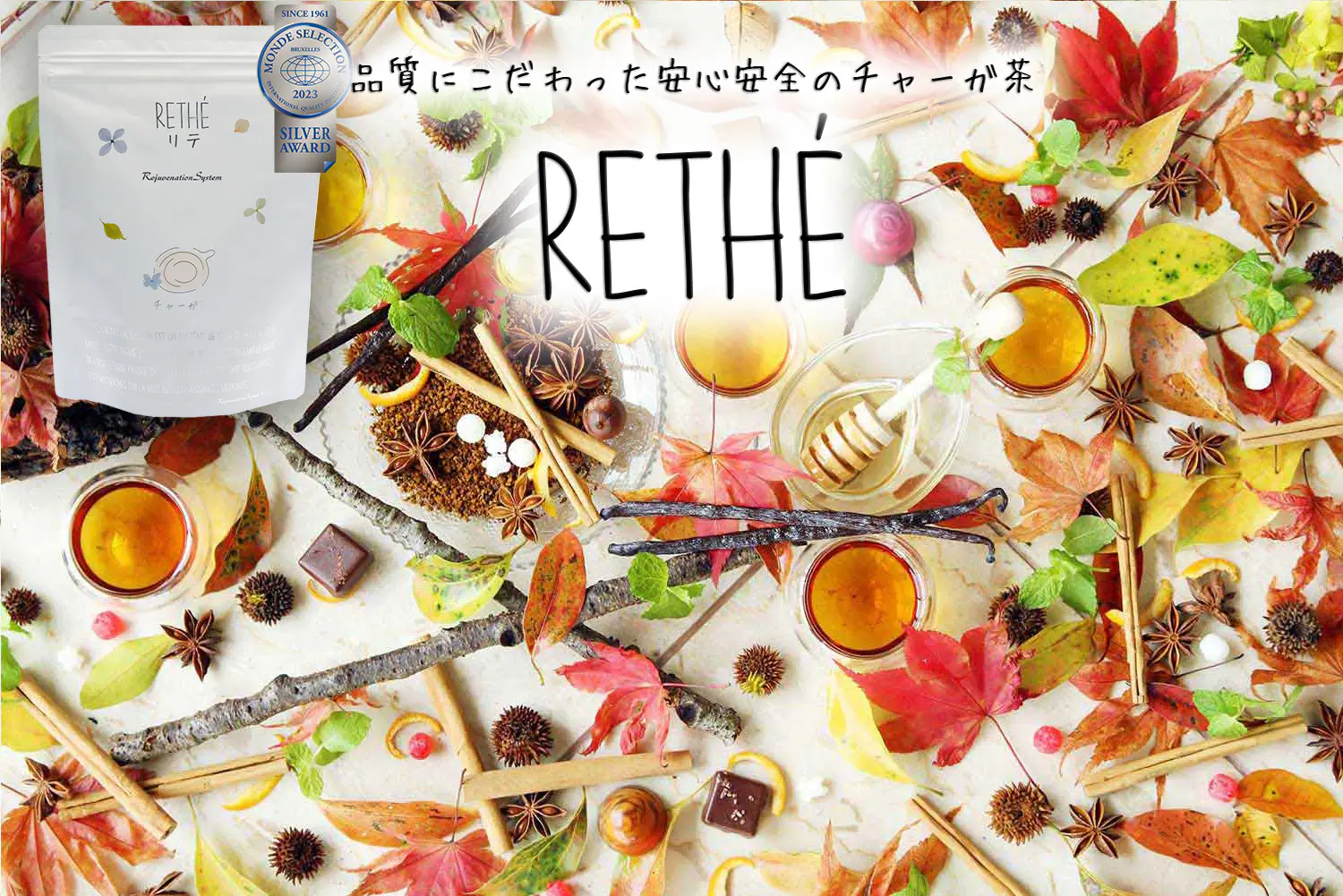
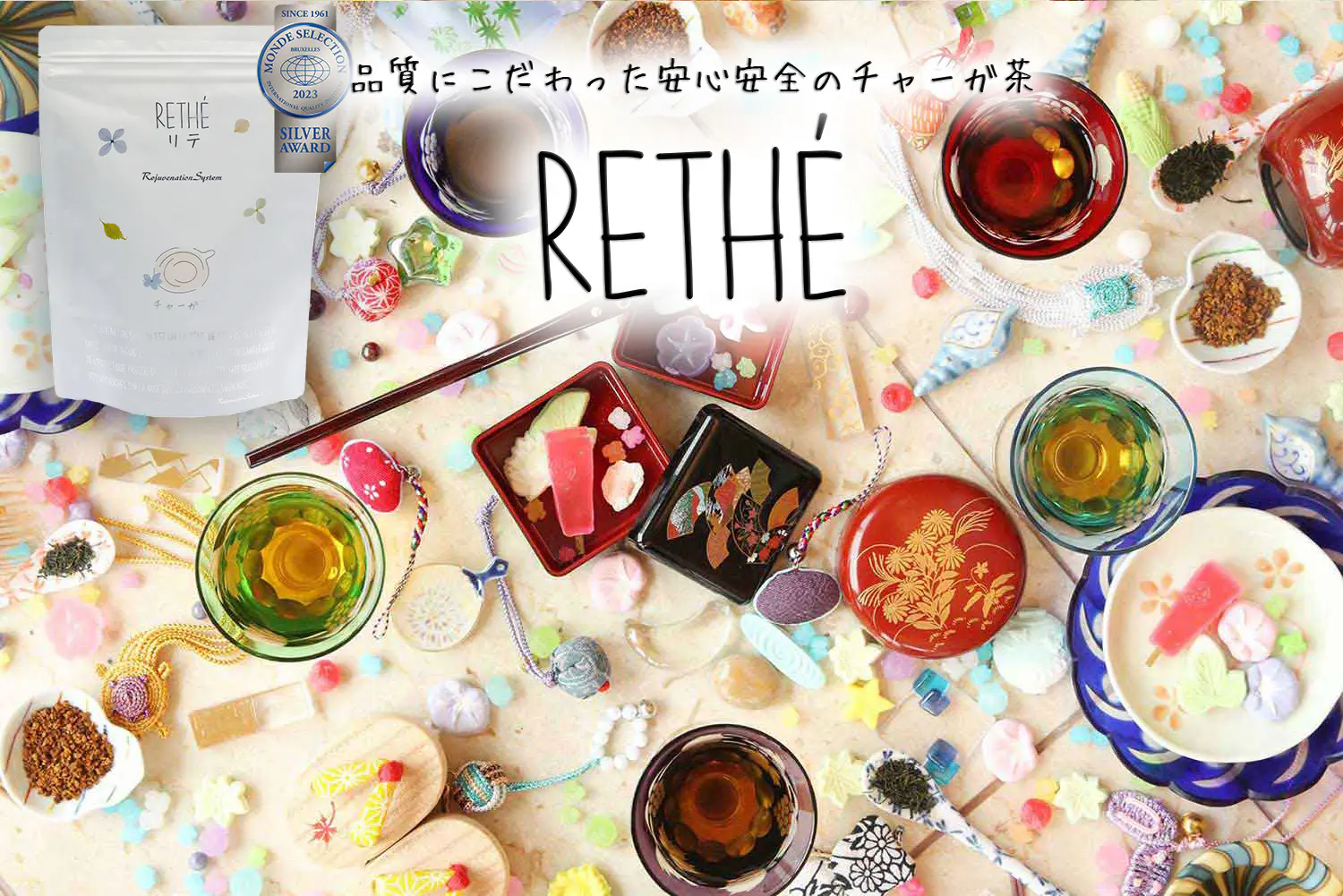
Exclusive Chaga tea of Rejuvenation System
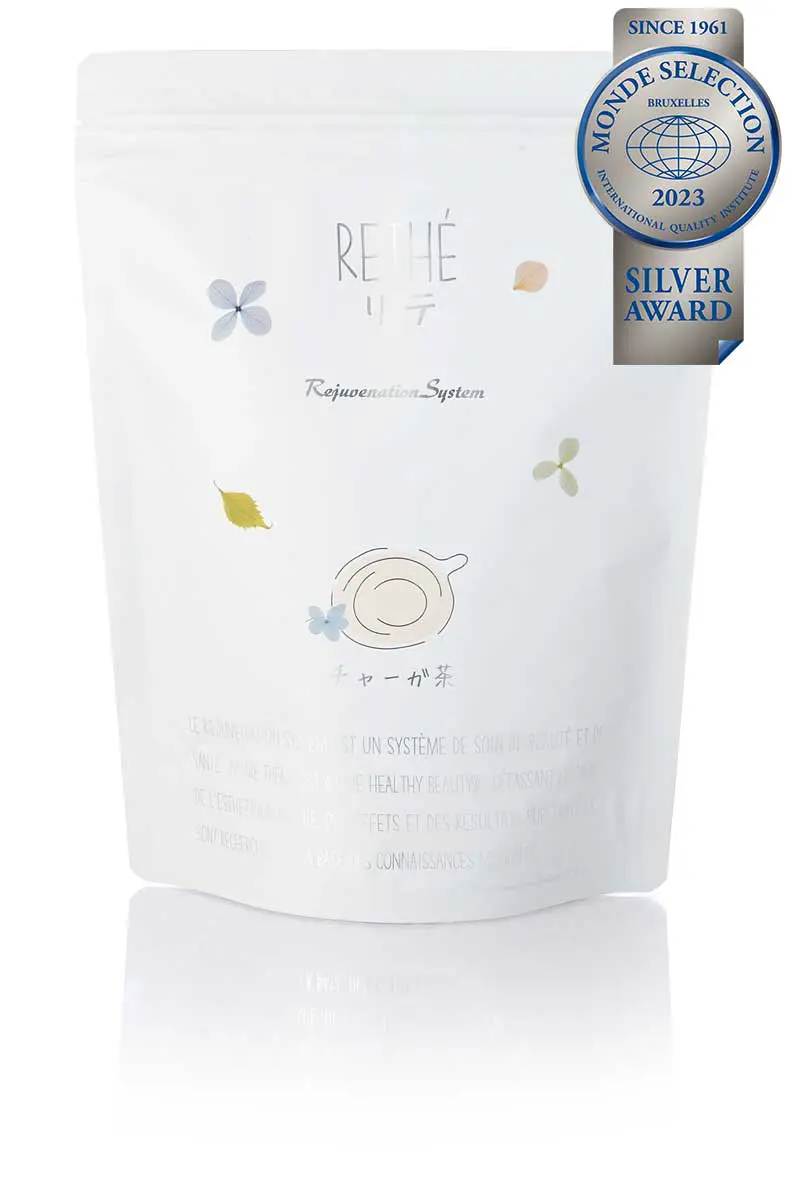
Inspection results
And above all, safety and security We promise to deliver the confirmed products. It is undeniable that Chaga, which grows in a natural environment over 10 to 20 years, may contain dangerous harmful substances, such as recent environmental problems and nuclear power plant accidents in Russia and Japan. .. Thorough analysis and inspection has made it possible to deliver safe and secure Chaga tea.
Commitment to chaga tea “RETHÉ”
The new RETHÉ is rounder, smoother, sweeter and more delicious. It's a taste that I'd like you to try by all means!
Chaga and mushrooms contain a lot of oxalic acid (an astringent and bitter taste that is also contained in vegetables such as spinach and bamboo shoots). Accumulation of oxalic acid causes urinary calculi.
New Chaga Tea Lite: Granulated with calcined calcium. Calcined calcium binds with oxalic acid and has the effect of suppressing the absorption of oxalic acid into the body.
Calcined calcium is superior in adsorption of synthetic chemical substances and harmful heavy metals compared to ordinary calcium. At Rejuvenation, based on the technology cultivated through the research of Veggie α, a vegetable cleaning agent, calcined shell calcium derived from scallops is made into fine particles and dissolved in tea to suppress the absorption of oxalic acid into the body. It is also useful for adsorbing bad oils such as lipid peroxide, synthetic chemicals and harmful heavy metals.
Since it is something you drink every day, we are committed to safety and security, and we strive to improve the quality of our products in order to help your health as much as possible.
Five features of Chaga tea "RETHÉ"

Chaga Tea RETHÉ's commitment to safety and security (Thorough analysis and inspection)
Since we drink it every day, we are particular about the safety of our products. We promise that we will only sell products that have been confirmed to be safe by inspection at Japan Food Research Laboratories.
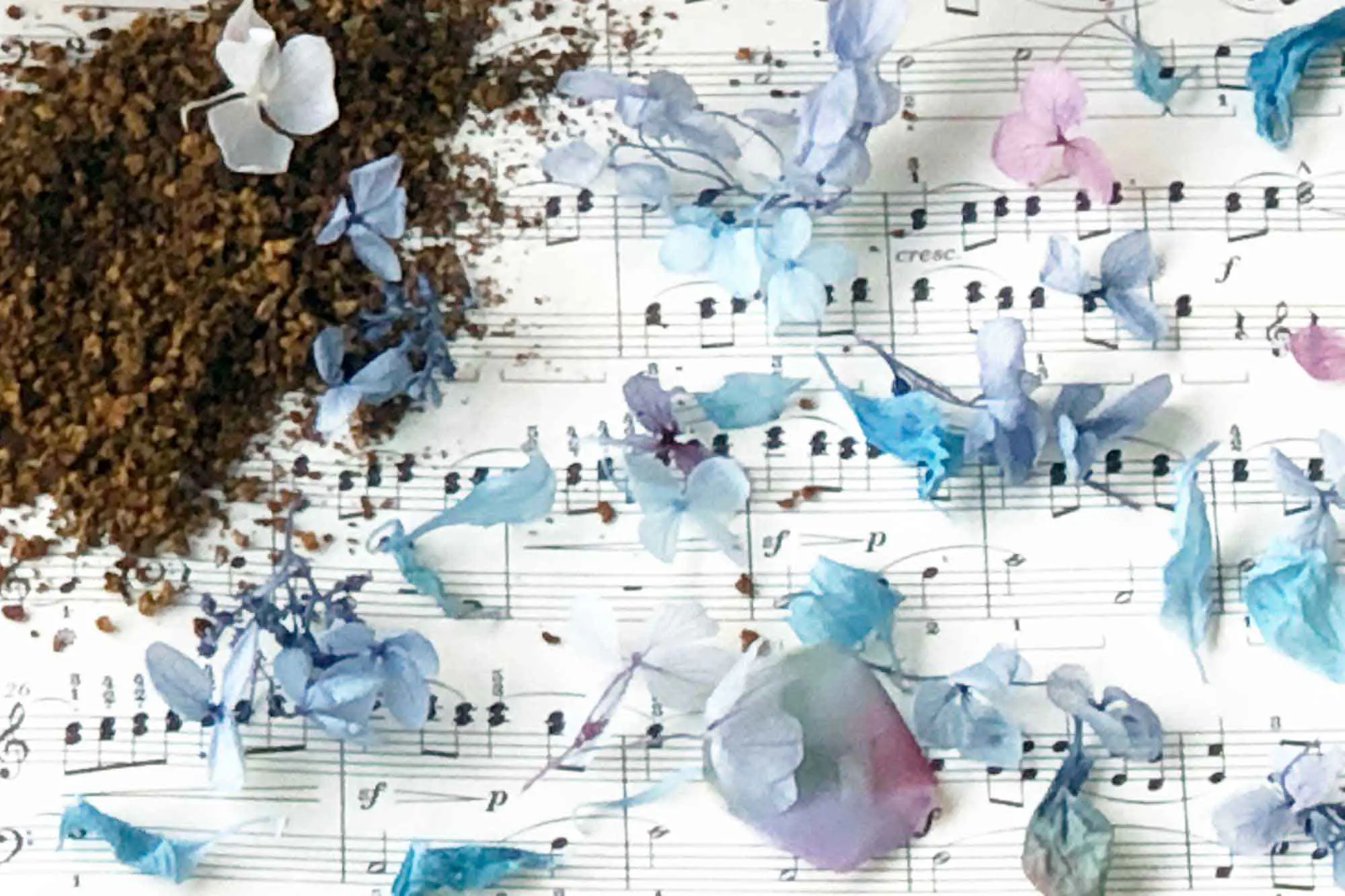
Inspection based on Ministry of Health, Labor and Welfare guidelines
Chaga, the raw material of RETHÉ, is a mushroom. Mushrooms are known as foods with high levels of detection of radioactive cesium. As of the end of March 2020, many mushrooms are also listed as subject to shipping restrictions in the list of foods subject to shipping restrictions based on the Act on Special Measures Concerning Nuclear Emergency Preparedness.
Measures and current status of radioactive substances in food (Japanese only)
34 years (as of 2020) have passed since the Chernobyl nuclear accident in April 1986. Although the regulated nuclide, cesium-137, has finally reached its half-life period, it goes without saying that the amount of radiation emitted is only about half, and it still affects the human body. Russia, which is the origin of Chaga, is an area where the effects of Chernobyl-derived nuclides are a concern, so careful inspection is required.
Because RETHÉ is used as tea, the standard value is applied based on the data of the Ministry of Health, Labor and Welfare, "tea conforms to the standard value of drinking water after drinking after being manufactured and processed." Specifically, the passing standard value is 10 becquerels or less per kg, which is the standard for drinking water.
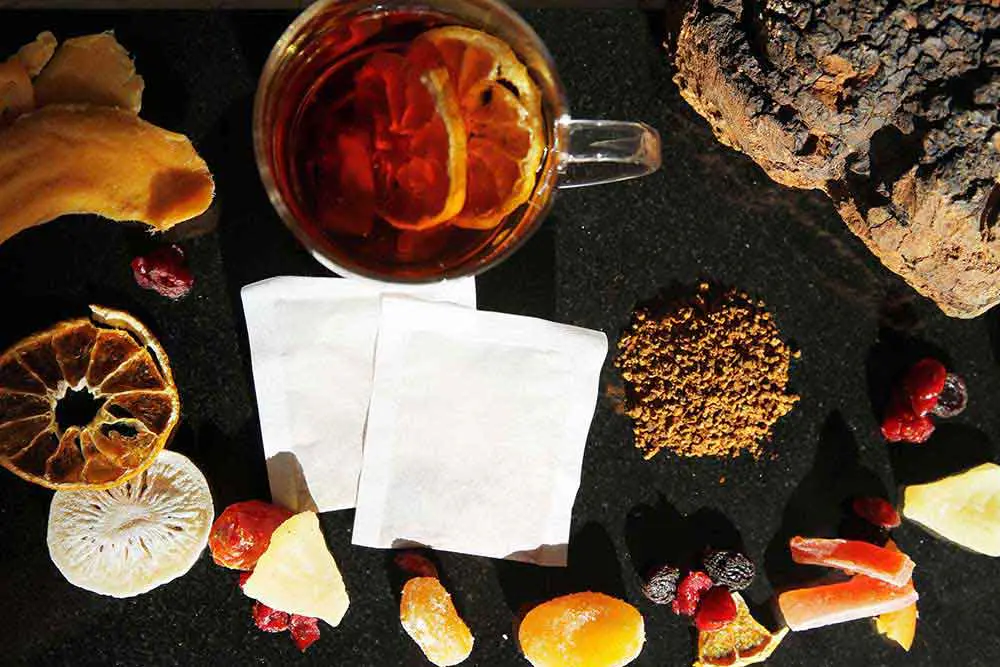
Radiological test results and 450 agricultural chemicals test results
Because it is a natural product, we inspect 450 types of pesticides and radioactive substance detection inspection for each production.Chaga grows naturally on birch trees and grows over 10 to 20 years. Due to unpredictable accidents at Chernobyl and Fukushima nuclear power plants over many years, pollution such as PM2.5 due to environmental problems, the possibility of containing invisible harmful substances, and storage after harvesting There is a danger that it may be harmful to the body, such as chemicals.The pursuit of quality in Chaga RETHÉ
The most important research subject in pursuit of health and beauty is to condition the body. Chaga has an exceptional health potential. The feature of RETHÉ is to ensure the usefulness of Chaga by a special manufacturing method using a patented manufacturing method. According to the inspection results of the Japan Food Research Laboratories, RETHÉ got41,000 units/g result. This value is 900 units/g ~ 1,000 units/g in normal chaga increments. It is low, and only by adding special processing, it is possible to reach a high concentration value. In addition, we succeeded in obtaining very good results in the Avanced Glycation End products production suppression test by the original method. According to the test results of the Japan Food Research Laboratories, RETHÉ got 70% at a concentration of 80 mg / mL. We have obtained very strong results. With ordinary chopped chaga, it was 26% at a concentration of 100 mg / mL . RETHÉ's commitment is to research materials and repeat inspections to manufacture products of reliable quality.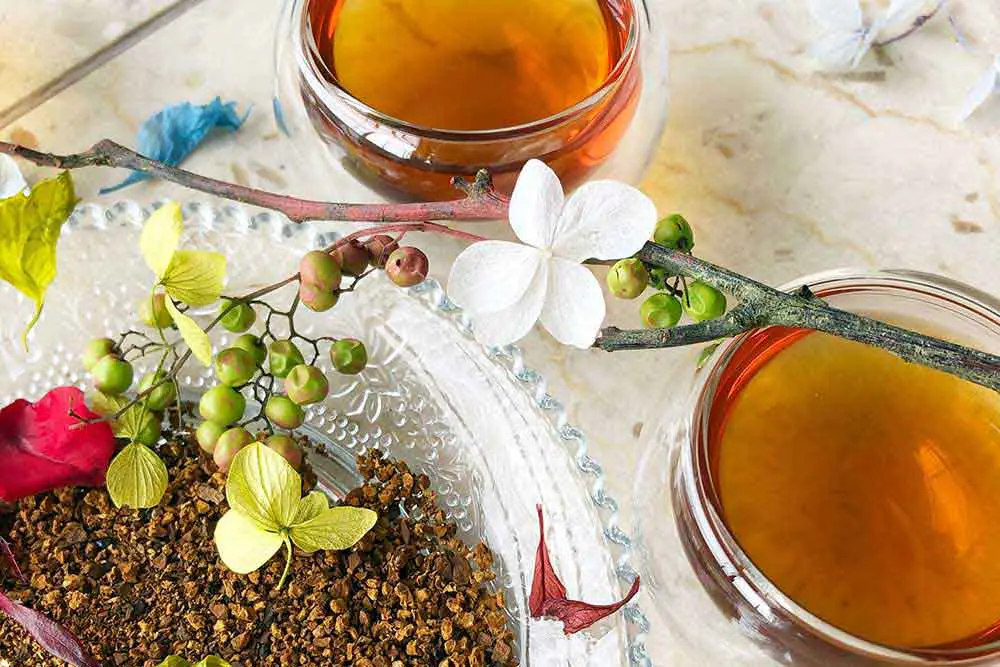
Using the cell wall destruction powder
The cells of chaga are very hard, and the β-D-glucan contained in chaga has a polymer structure in which many sugars are connected like chains, so it is difficult to dissolve in water even when boiled, and cannot be digested or absorbed. In order to efficiently dissolve chaga's nutritional components in water, the cell walls are broken down using special machinery and technology and turned into powder. By crushing the cell wall into a powder with a high density below the cell size, various nutritional components such as SOD enzyme, β-D-glucan, lignin, inositol, flavonoids, dietary fiber, minerals, and vitamins quickly dissolve in water, allowing you to fully enjoy the blessings of chaga.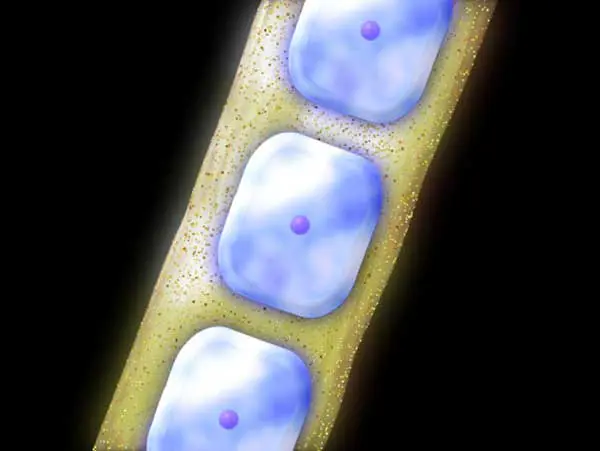
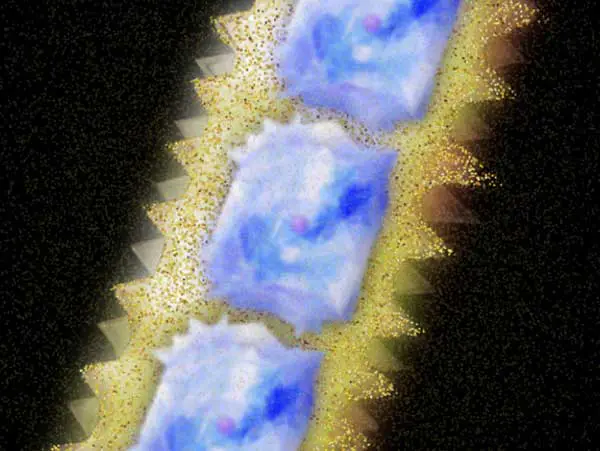
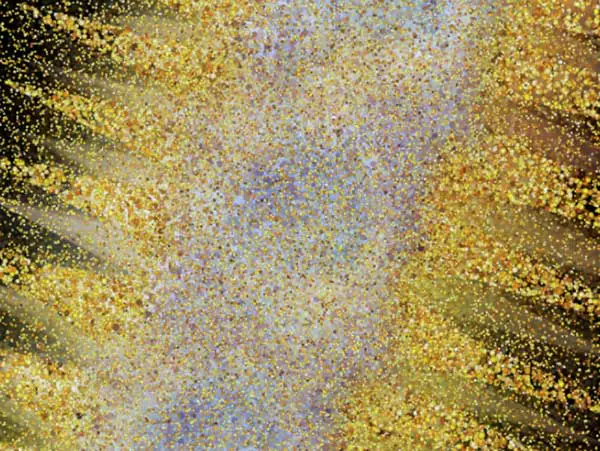
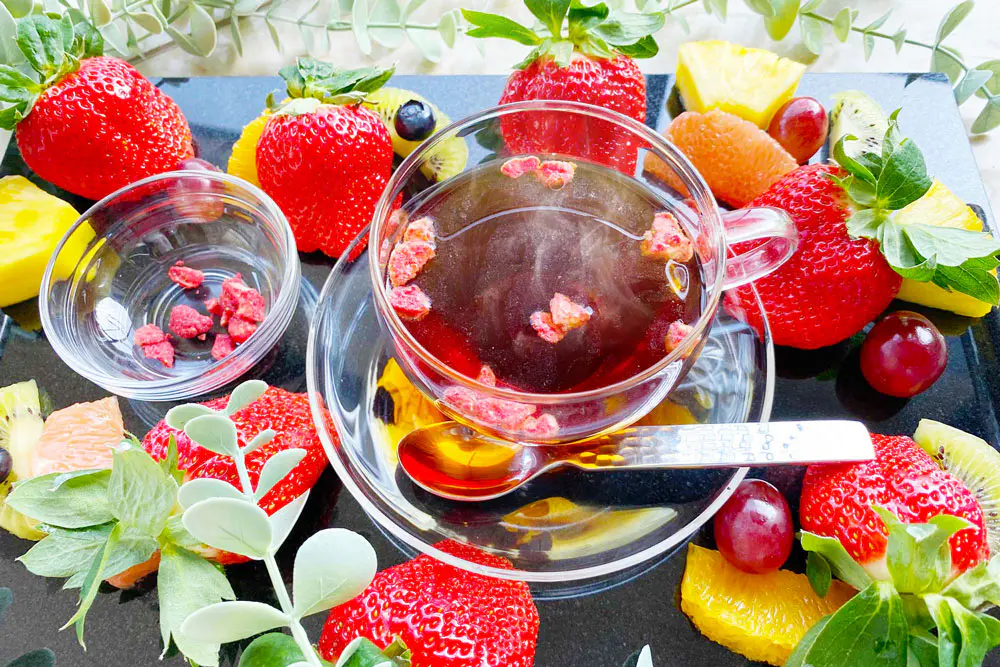
Difference between crushed powder and destroyed powder
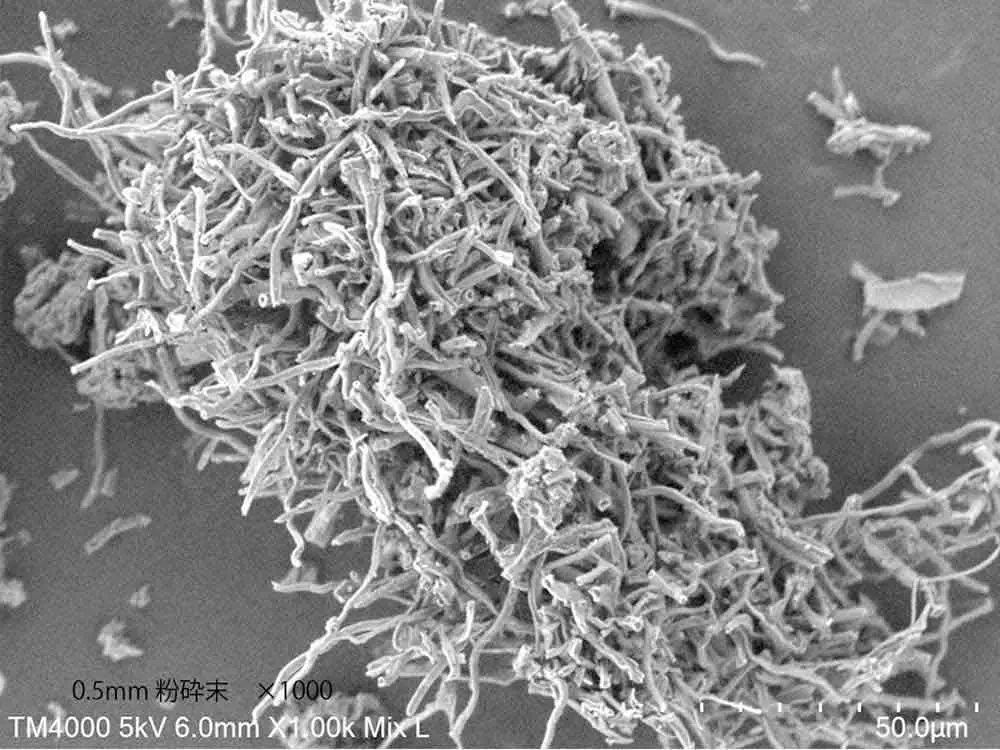 The crushed powder is a hard Chaga which has been crushed into a powder form. As you can see by comparing with the micrograph, the fiber remains the same state. The difference with the cell wall destruction is that you can not consume the nutritions such as; SOD enzyme and β-D-glucan. This is due to the method which crushes from the outside of Chaga’s cell.
The crushed powder is a hard Chaga which has been crushed into a powder form. As you can see by comparing with the micrograph, the fiber remains the same state. The difference with the cell wall destruction is that you can not consume the nutritions such as; SOD enzyme and β-D-glucan. This is due to the method which crushes from the outside of Chaga’s cell.
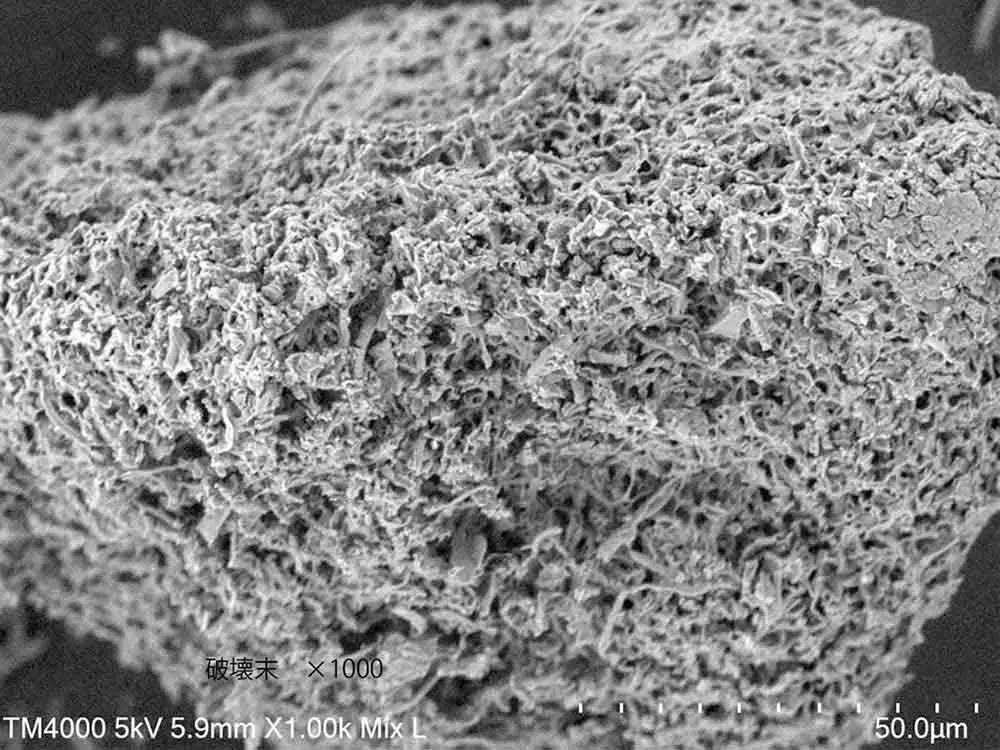 The cell wall destruction powder is a special process that destroys the hard cells of Chaga by applying pressure from the inside. As you can see from the micrograph, you can identify that the cells are finely broken into minuscule particles. The solid cells of Chaga contains various valuable nutrients such as β-D-glucan, lignin, and polyphenol, as well as SOD enzyme.
The cell wall destruction powder is a special process that destroys the hard cells of Chaga by applying pressure from the inside. As you can see from the micrograph, you can identify that the cells are finely broken into minuscule particles. The solid cells of Chaga contains various valuable nutrients such as β-D-glucan, lignin, and polyphenol, as well as SOD enzyme.
SOD enzyme content of chaga tea “RETHÉ”
Chaga contains many ingredients that are useful for the body. At RETHÉ, we thoroughly inspect and analyze the materials used in our products, work to improve the highest quality, which is also the policy of the rejuvenation brand, and deliver it to everyone with the correct information.

A major feature and attraction of Chaga is its surprisingly high health. As shown in the above material, there are only about 1000 units when examined in the unprocessed state of Chaga. So what is a 35,000-unit chaga that is 35 times more expensive? The powder obtained by concentrating and drying the liquid obtained by boiling chopped chaga is the extract powder. 1g of the powder exceeds 35,000 units. Of course, the extract powder, which has 35 times the value of chaga mushrooms, is a very very expensive material. Our Chaga tea RETHÉ uses original processing to add the extract powder and the cell wall destruction powder, which is also a patented manufacturing method, to the strong numerical value of 41000 units, which is impossible with chopped chaga alone, and the tasteful and rich circle. We have realized the deliciousness.
Winner of the Monde Selection 2023 Silver Award
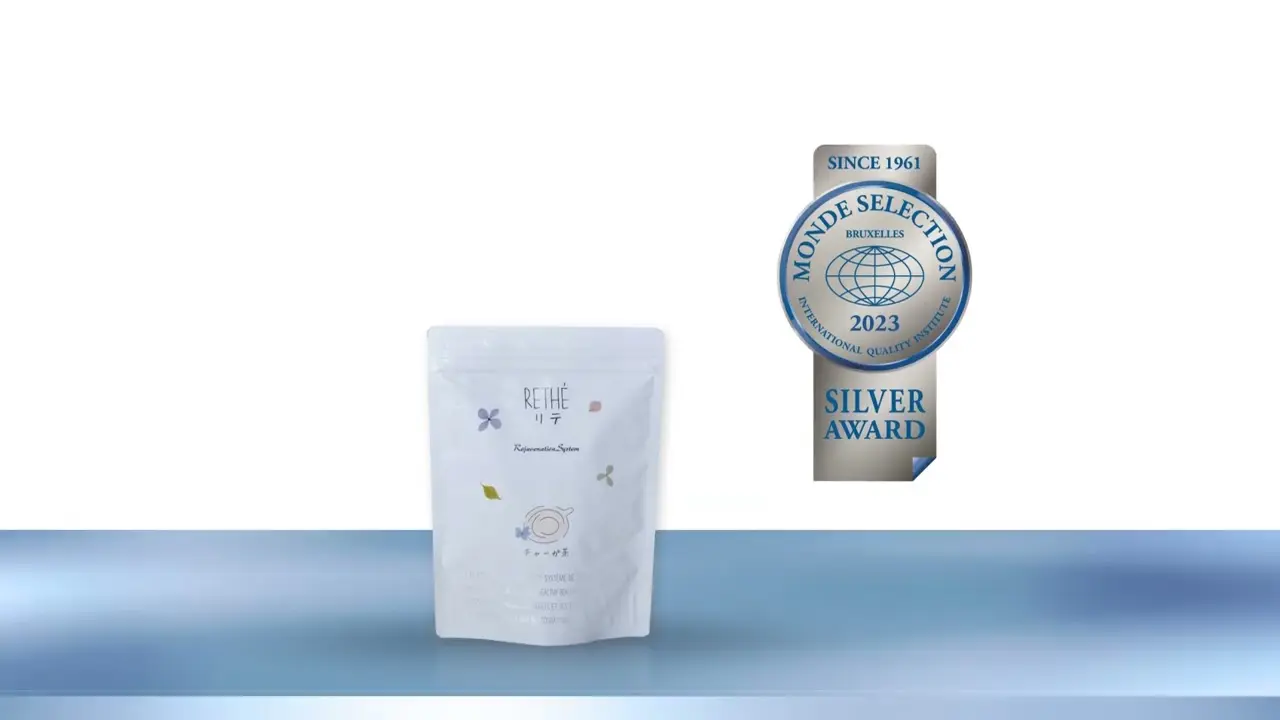

Monde Selection
Monde Selection certifies the quality of our products. Since 1961, Monde Selection has evaluated the quality of consumer products around the world, with 80 international experts conducting a 360 ° quality evaluation in a completely independent manner. Each product is individually sampled and tested for a number of carefully selected parameters according to product category and consumer expectations. The tests are sensory, scientific and legal, depending on the type of product.
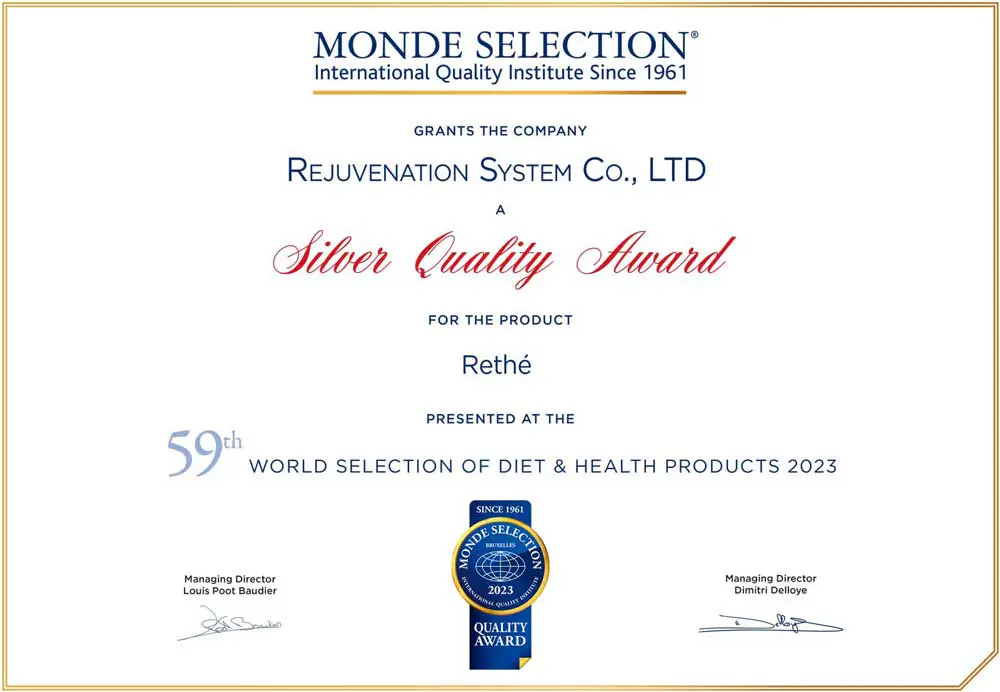
Monde Selection's original approach
Monde Selection, unlike other contests and competitions, does not compare each product to any other product in its category. Monde Selection experts evaluate the intrinsic quality of each product as a whole, according to very accurate and highly diverse criteria.
Frequently Asked Questions
Does Chaga smell or taste?
Chaga is almost tasteless and odorless, has less habit than bancha, and is easy to drink. Click here for Chaga recipeWhat nutrients does Chaga tea contain?
It contains SOD enzyme, β-D-glucan, lignin, saponin and betulinic acid.Chaga has a long harvest time of more than 10 years, so I am worried that it may contain chemicals such as pesticides.
I think that there are concerns about pesticides in everything that is boiled as tea, but RETHÉ conducts 450 types of pesticide detection tests for each manufactured product and provides safe products.I hear that the black part on the outside of Chaga is more nutritious. Which part is RETHÉ made from?
Since RETHÉ extracts all the nutrients in the cells at a high concentration, we offer products featuring more than 40,000 units of SOD enzyme, β-glucan, and high usefulness, regardless of whether they are outside or inside.What are the benefits and benefits of chaga tea?
Chaga is a mushroom that grows on birch trees, and we mainly make tea from it. Chaga tea is just a food, so it has no effect on treating illnesses or curing the body. That is the job of medicine, herbal medicine, and doctors. We sell it as a wonderful tea with hig h nutritional value. Chaga contains many useful ingredients. These useful ingredients are said to have positive effects on the body. Drinking chaga tea, which contains many useful ingredients, is a great health habit, and we confidently recommend it. We hope you enjoy this wonderful tea every day.Are there any side effects of chaga tea?
Chaga tea is a natural tea and does not have any medicinal properties. In general, you can safely take it without worrying about side effects. However, if you have any of the f ollowing, please consult your doctor in advance. Those who should be especially careful:If you are taking anticoagulants (medications that t hin the blood), the ingredients contained in chaga may affect the effects of anticoagulants.
If you have an autoimmun e disease Chaga contains ingredients that affect the immune system, so if you have an autoimmune disease, please consult your doctor before drinking it.
If you are planning to have surgery, we recommend that you refrain from consuming chaga tea before and after surgery.


This video introduces a muffin recipe using chaga tea "RETHÉ". Please take a look.


This video introduces a cookie recipe using chaga tea "RETHÉ". Please take a look.
List of dealers of Chaga tea 'RETHÉ'

There are RETHÉ dealers all over Japan. In addition, we are looking for corporate companies from many retailers and sole proprietors who can partner with us.
Company Profile
- Corporate name
- Rejuvenation Co., Ltd.
- Head office location
- Mainichi Shimbun Building 2F, 3-4-5 Umeda, Kita-ku, Osaka, Japan
- Date of establishment
- March 1, 2004
- Capital
- 10 million yen
- Representative
- Representative Director Hiromi Sato
- TEL
- 06-6867-9010
0120-309-655 - Website
- https://www.reju.jp/